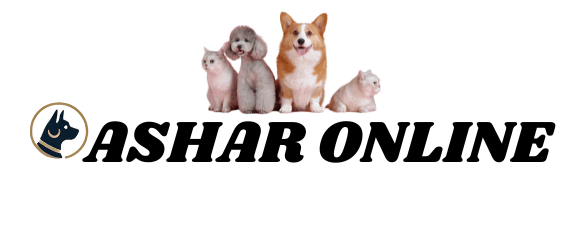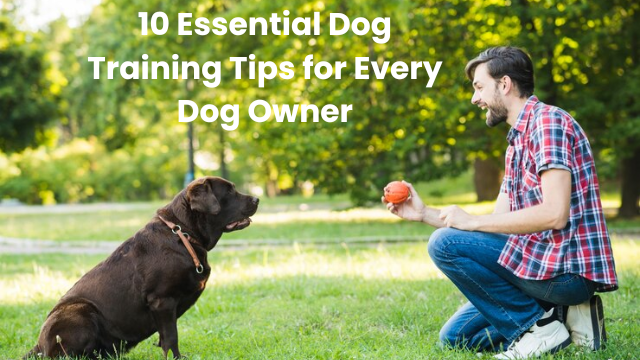Overview
One of the most important aspects of having a dog is teaching it. dog training tips also ensures your dog behaves well. It strengthens your relationship with them. This guide offers key dog training advice. It will help you educate your pet, from basic commands to advanced methods.
Foundations of Dog Training Tips
Creating a Schedule
Establishing a reliable schedule is essential to dog training tips. Dogs want consistency in their lives. Feed, walk, and train them at regular intervals throughout the day. This aids in their understanding of appropriate behavior and expectations.
The Application of Positive Reinforcement
One effective training method is positive reinforcement. When your dog behaves well, give them goodies, compliments, or extra playtime. This motivates them to carry out the action again. Reprimanding someone may make them fearful and aggressive. Avoid it.
Training in the House and Crate
Practical Housebreaking Methods
Your dog needs patience and consistency to housebreak. Take your dog outside after meals and drinks to prevent accidents. As they relieve themselves outside, praise and reward them. Accidents will happen; clean them up.
- Every two to three hours, let your dog go outside.
- As soon as they eliminate, give them a reward.
Advantages and Techniques of Crate Instruction
With crate training, your dog can have a secure environment. It can help with house training and stop harmful behavior. Create a welcoming introduction to the container with a gentle pace. Never inflict punishment with the box.
- To get your dog to get inside the crate, give them treats.
- Extend their crate time in steady increments over time.
Leash Training Program
Introduction to Leash Training
Dog training tips with a leash makes your dog walk in sync. Allow your dog to become accustomed to wearing a leash indoors first. Before venturing into more crowded areas, practice walking in a calm setting.
Advice for Walking on a Loose Leash
Walking on a loose leash stops your dog from pulling you. When the leash becomes tight, stop walking. Wait until your dog comes back to you before continuing. Maintaining consistency is essential.
- If your dog pulls, stop and adjust your route.
- Reward your dog with treats when they walk beside you.
Socializing Your Dog
Value of Early Socialization
Early socialization aids in your dog’s development into a well-mannered adult. Expose children to a range of individuals, environments, and animals. Good experiences are essential to their growth.
Techniques for Socializing Both Adult Dogs and Puppies
Both adult dogs and puppies must socializing. Start with controlled parameters and step up the level of disruption. Reward composure and good manners.
- Set up playdates with other canines.
- Introduce your dog to a variety of settings, such as parks and crowded streets.
Clicker Training
Overview of Clicker Training
In clicker training, a sound indicates a desirable action. It enables your dog to comprehend which behaviors are rewarded. After the clicker, a treat reinforces the behavior.
How to Implement Clicker Training
Introduce the clicker by clicking and delivering a treat to begin clicker training. You may use the click to praise excellent behavior once your dog learns to link it with a treat.
- In between training sessions, click and treat.
- Use the clicker to shape complex behaviors step by step.
Teaching Basic Commands
Essential Commands: Sit, Stay, Come
Teaching the basics of obedience is the first step. It’s the first step to having a well-mannered dog. You need to teach Sit, Stay, and Come. Let’s begin by saying “sit,” “stay,” and “come.” To reward these behaviors, give them praise and treats.
- To get your dog to sit, hold a treat above their head.
- Stretch out “stay” by lengthening time and increasing distance in stages.
Training Techniques for Each Command
Each command requires specific approaches. For “sit,” entice your dog to sit down with a treat. Give your dog a hand signal for “stay.” Then, step back while giving them a treat for staying.
Addressing Common Behavior Problems
Managing Digging and Chewing
To control, you must manage instinctive habits like digging and chewing. Give them chew toys and set aside a space for digging. When your dog uses them, give them praise.
- To keep toys engaging, rotate them.
- Keep an eye on your dog and guide them toward suitable activities.
Techniques for Controlling Barking and Jumping
Overindulgence in jumping and barking might be harmful. Give your dog the commands “off” for jumping and “quiet” for barking. Give consistent praise for composure.
- When your dog jumps, ignore it and give them a treat when they land on all four paws.
- For the “quiet” instruction, speak in a stern but kind manner.
Advanced Training Techniques
Verifying Actions
By proofing habits, you can make sure your dog follows instructions in a variety of settings. Practice giving orders in various contexts with a growing number of distractions.
- Shift to more populated zones once you’ve begun in a calm space.
- For difficult settings, use expensive candies.
A Look at Some Advanced Commands and Dog Training Tips
Tricks and advanced commands keep training interesting and demanding. Use the same positive reinforcement methods to teach stunts like “roll over” and “play dead”.
- Divide up tricks into manageable chunks.
- Have patience and enjoy yourself during the dog training tips.
Dog Training Tips for Specific Situations
Public Places Training
Your dog will behave well in crowded locations if it has received training for public spaces. Exercise orders such as “leave it” and “heel” in crowded areas.
- Start with short trips and increase their duration.
- Give your dog praise for his composure in public.
Getting Ready for Vacation and Vet Visits
You both have less stress. Your dog undergoes training for travel and vet visits. Help them get used to strangers and the car by handling them. To establish a favorable association, give rewards and praise.
- To acclimate your dog to traveling, take short drives.
- Prepare for veterinary visits by practicing handling techniques.
Resolving Training Difficulties
Understanding Training Peaks
Training plateaus are typical. If your dog no longer makes progress, go back and review the fundamentals. Make sure the training techniques you use are consistent.
Modifying Training Methods
If your training doesn’t progress, change your methods. To keep your dog interested, try shorter sessions. Use different treats or a strategy.
- Change up your workout regimen and places.
- Combine praise, toys, and treats.
Conclusion
Being a dog trainer is fulfilling. It requires perseverance and determination. These tips will help you bond with your dog. They will ensure he grows up to be well-mannered and part of the family.
FAQs
What are the five golden rules of dog training tips?
- Follow through on instructions and prizes.
- Make use of encouraging feedback.
- Make training sessions brief.
- Conclude with optimism.
- Have perseverance and patience.
What is the “3 3 3” rule?
After adopting a new dog, people refer to the period of change as the “3 3 3 rule.”
- Three days to unwind.
- Routines take three weeks to learn.
- Three months to get used to their new house.
What are the seven most important dog commands?
- Sit
- Remain
- Drop
- Your Heel
- Put it away
- No
What is the 1 2 3 method of dog training tips?
The 1 2 3 approach entails:
- Delivering an order.
- Awaiting two seconds.
- Indicating with a hand gesture if the directive is not obeyed.
Which are the most important dog training tips?
- Begin your training as soon as possible.
- Maintain consistency.
- Make use of encouraging feedback.
- Make your sessions enjoyable and brief.
- Have perseverance and patience.
Where can I get the greatest advice on dog training tips?
Reputable resources for advice on dog training tips include:
- The American Kennel Club
- The Spruce Pets
- Veterinarian Small Door
What kind of training works best for dogs?
Providing positive reinforcement yields the best dog training tips results. Reward good behavior with play, treats, and praise.

